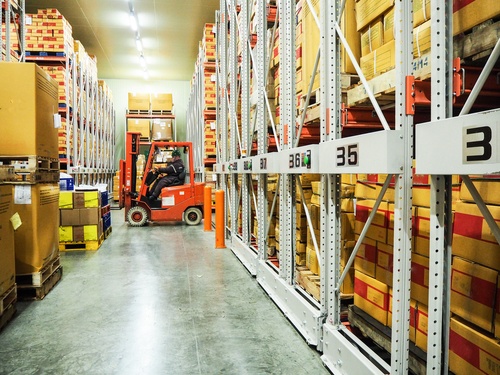When you're engineering the mechanical infrastructure of your manufacturing facility, there are a few ways to ensure you build a functional and efficient model. Here's how:

1. Streamline Material Handling
The "holy grail" of efficiency is to achieve the least possible number of interactions with a given product from start to finish. That process "starts" when you begin gathering the raw materials required to build a product and "finishes" when the completed product has been shipped out of the facility to the customer or distribution center.
Designing an efficient manufacturing facility involves planning how you will source and import the raw materials you require. The most economical manufacturing facilities are located in close proximity to established material-trafficking routes (such as railroads). They're also equipped to safely store large amounts of raw materials on-site (in structures such as silos), to reduce their dependency on material shipping schedules. Lastly, it's important to determine how raw materials will be brought into your facility and fed into the right machine. If you're trying to minimize the number of "touches" in a product's lifecycle, that may mean automating this initial step by installing vacuum-powered feeders and conveyor belts — something that will dictate the overall layout of your facility.
2. Location, Location, Location
It's hard to be competitive if you're not geographically close to your customer and material suppliers. While a remote manufacturing facility is not impossible to sustain, it requires more preemptive planning. In other words, how will you compete with facilities that are closer and how will you overcome the extra transportation time and costs? For many businesses — especially new ones — a production model that requires you to traverse a wide geographical area to buy materials and sell your product is not economically feasible or reliable. Building a manufacturing facility in an inconvenient location can create unnecessary obstacles for your company in the long-term.
The same principle holds true for workflow. If the raw materials are entering your facility on the opposite side of where they need to be input into a given machine, then you're bound to spend time and effort bridging the literal gap. You can streamline the process by making sure that one step naturally flows into the next — that machines and departments are organized in a logical progression that requires the least amount of external interaction.
3. Don't be Myopic About Your Facility Layout
When it comes to efficiency, workflow is key. A clear workflow should be established and incorporated into your facility's overall design, not as an afterthought but as a driving consideration. Think about how people will interact with the machinery, what size the machines will be and how much space is required in order for employees to operate safely and efficiently. It's important to be strategic — set short, medium and long-term goals that address how your facility will accommodate future layout changes or expansion plans.
If you plan to host multiple jobs in your facility at a given time, it's important that your tooling and machinery is designed in a way that allows for efficient changes from one job to the next. Often, one machine is capable of running multiple projects without much down time — if engineers preemptively focus on ways to ease the transition between different jobs (without adding extra touches or extraneous movements).




